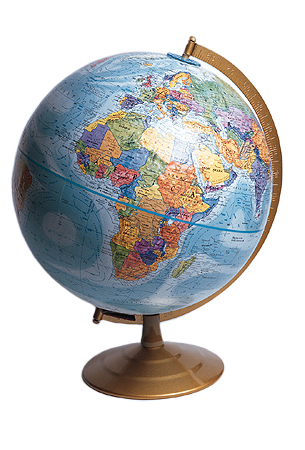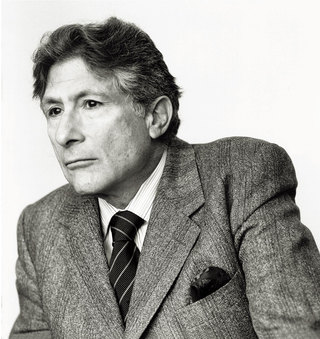LITR / CRCL 5734:
Colonial & Postcolonial Literature

Student Text-Dialogue Presentation 2008
Thursday, 28 February: Continue E. M. Forster, A Passage to India (pp. 35-212; through II, "Caves," chapter xx); Edward W. Said, "Orientalism" (handout)
· Dialogue between A Passage to India & "Orientalism":
leader: Dawlat Yassin
|
Introduction to Edward Said and his book Orientalism
|
Edward W. Said, 1935-2003 |
Introduction to Edward Said and his book Orientalism
Since we are already familiar with E.M. Forster, I will introduce Said only.
Said’s identity is complex. He is Palestinian by birth and heritage, British and American by education and a naturalized American citizen. It is not easy to be a Palestenian advocating the rights of his people after pledging allegiance to his newly adopted country. The difficulty lays in the path of the foreign policy practiced by the United States in the Middle East; particularly supporting Israel against Palestinians rights. Each culture has a claim on him that contradicts the other. This makes him feel displaced and disoriented. This appears clearly in his memoir which he titles “out of Place”
Said was exposed to the Western mentality and the way they incline to view the “other”. He was not happy with the way Arabs and Moslems, are represented in the West whether in Academia, mass media or in society. Consequently, he sets himself in a position to defend Arabic and Islamic culture, not because he wanted to defend Islam, for he was a Christian, but to defend a bigger identity; the Eastern culture with all its religions.
Said was a critic and a politician. His most important work is Orientalism with which we are dealing today.
Orientalism deals with all the study of the East done by Westerners as a systematic discourse which Said calls orientalism. In all it fields, orientalism makes the orient the object of its scrutiny. It can never be objective as it is always based on and works towards making the East the other, the opposite and inferior to the Western personality. Orientalism is built on the distinction between two hemispheres of the earth and their population. The orientalists can not free themselves of this basis of Orientalism for they accept the discourse before elaborating on its theories and ideas.
Dialogue between Edward Said’s Orientalism and E.M. Forste’s A Passage to India
Both Orientalism an A passage to India fulfill the following objectives of our course:
1a. Intertextuality:
To read literary texts as political, economic, demographic products and agents that provoke responses from other voices and traditions not exclusively as timeless, autonomous, universal masterpieces.
1b. Historicism:
To counter challenges to global knowledge and planetary identity by enhancing knowledge and identifying persistent oppositional themes or identities in cross-cultural dialogues:
The self vs. the other
First World vs. the Third world
In A passage to India, a frequently occurring construction of the orient by the West is calling Moslems as Mohammadens. They Derive the name as Jesus Christ’s followers are Christians, So Mohammad’s followers are Mohammadens; a name Moslems refuse protesting that this does not apply as Christians Worship Jesus Christ While Moslems do not Worship Prophet Mohammad.
This construction on the West’s side is not innocent at all. By applying it the word Mohammadan with the original fact that both religions worship the God of Abrahm( each in their way) the implication here is that Islam is no more than a kind of Christian heresy.(orientalism)
Dr. Aziz echoes a known notion originally constructed by the Europeans that the westerner is rational while the oriental is emotional. When Mrs. Moore tells Dr, Aziz that she does not understand people but she knows whether she likes them or not, his answer comes: “ Then you are an oriental.”
In Orientalism Said states that:
“ In short, Orientalism as Western style for dominating, restructuring, and having authority over the orient.”(Handout 88)
Trying to explain to his mother the relationship with the natives, Mr.
Heaslop reveals a lot of Western hegemony and high handed
treatment of the East :
“We are not her for the purpose of behaving pleasantly”
“ India likes gods”
This pretence of knowledge and the subsequent right to superiority
it gives can be found in Orientalism (32) “As Belfour justifies the
necessity for British occupation of Egypt, supremacy in his mind is
associated with [British’s] knowledge of Egypt, and not principally with military and economic power.”
Even when this knowledge is not genuine, the British still use it to claim
superiority over the natives in a way to justify their occupation of the land and
their and treatment of its people.
Mr. McBryde’s theory that says “ ‘ all unfortunate natives are criminal at heart, for the simple reason that they live south of latitude 30. ”They are not to blame , they have not a dog’s chance –we should be like them if we settled here”
Said sees “the relationships between Occident and Orient is a relationship of power, of domination, of varying degrees of a complex hegemony.”(Handout 89)
Mr. Heaslop’s racism are made clear in his distinction between the ways Westerners’ paying attention to details in everything while Orientals do not: “Inattention to details; the fundamental slackness that reveals the race. Similarly to meet in the caves as if they were the clock at …”At the time the reality is that Dr. Aziz does not forget about the collar stud, rather he gives it to a friend out of oriental generosity, and when he plans the expedition he does pay attention to each and every detail.
Again the differentiation between Both Mr. Heaslop’s and Adela’s calm attitude after the accident while Nawab Bahadur panics.
-Adela thinks “ probably this man has several wives, ”Mohammadans always insist on their four, according to Mrs.Turon.
In Orientalism,Said says:
“The orient is…one of the west’s deepest and most reoccurring image of the other, in addition, the Orient has helped to define Europe (or the West) as its contrasting image, idea personality experience.” (Handout 87)
Mr. McBryde:
“I am afraid; when an Indian goes bad, he goes not only very bad, but very
queer….The psychology here us different”
Dr. Aziz makes up a proverb that reflects his traditions “If money goes , money comes”. Is contrasted to Mr. Fielding’s, “A penny saved , a penny earned; A stitch in time, saves nine.
In all cases, the “Orientalizing of the Orient" (Said 49) and reconstruction it has always been presented as the inferior other who needs the superior civilized Westerner to take care of it, rule and exploit it. Its past and history is no more than an attraction to the European and its present is the absolute need of the European presence.
“ The orient was almost a European invention, and had been since antiquity a place of romance , exotic beings haunting memories and landscapes, remarkable experiences. Now it was disappearing; in a sense it had happened….the main thing to the European visitor was a European representation of the Orient and its contemporary fate.”(Handout 87)
Questions:
Will the reading of Said help us recognize that the many images of the East we encounter in Western literature are mere constructions by Orientalists? And will it give us the incentive to look for the real image or to hear the Orient speak and represent himself?
Will all the technical advances in communication and the Web have an impact on the way any two cultures communicate?
In addition to the handout from Orientalism, I used the following book:
Said, Edward. Orientalism. New York: Vintage Books,1978.

